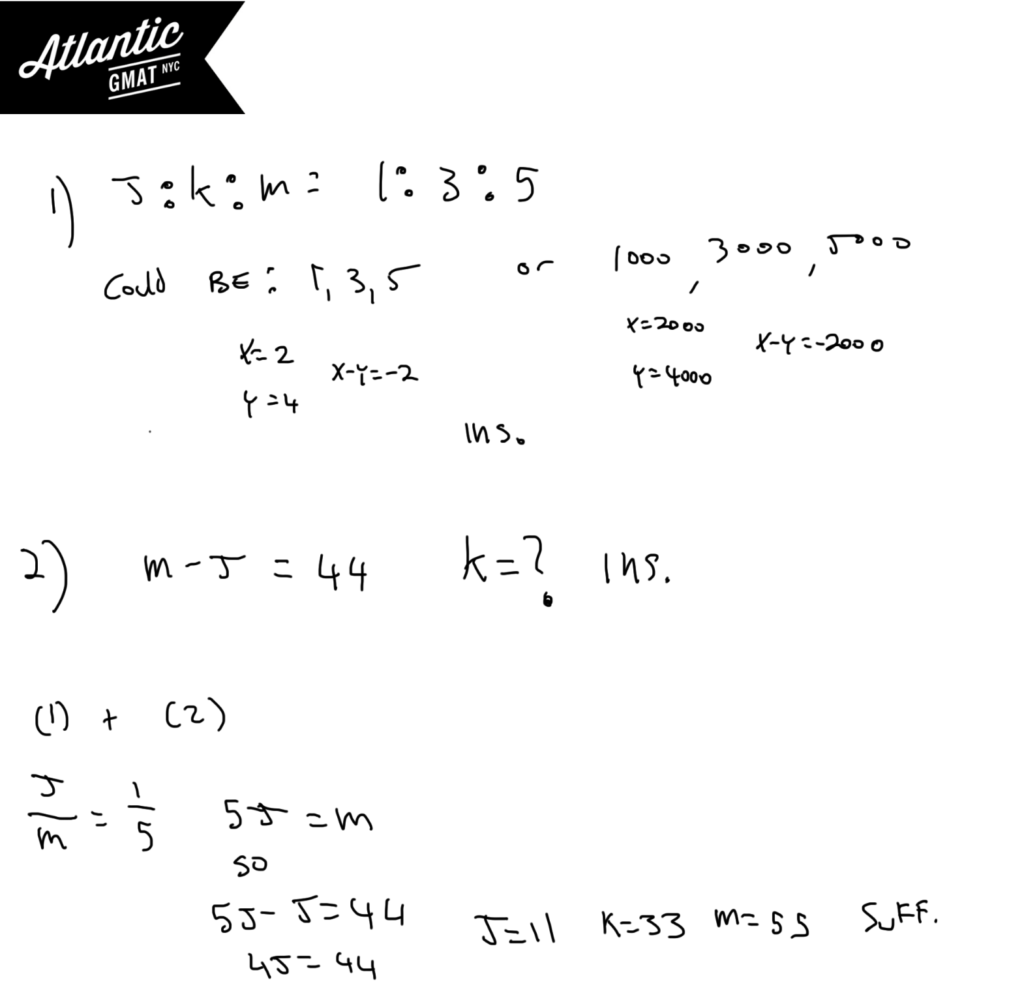GMAT Question of the Day – Data Sufficiency – Number Properties
J, K, M, X, and Y are positive integers. X equals the sum of the integers between J and K and Y equals the sum of the integers between K and M. What is the value of X – Y?
(1) The ratio of J to K to M is 1 to 3 to 5.
(2) M – J = 44
[spoiler]C.[/spoiler]
GMAT Question of the Day Solution
Here’s another GMAT number properties question. Feel like you are seeing a lot of these questions? That’s normal. They are all over the GMAT Quant. Get comfortable with this question type.
In this question of the day we are dealing with consecutive sets and summing a range of consecutive integers. We need to know the values of J, K, and M in order to solve for X and Y. Ultimately this question comes down to counting equations.
Statement (1) gives us a lot of information but not enough to answer the question. Why? You have a ratio, which gives you two unique equations, but no absolute values. So the number could be 1, 3, and 5 or 1000, 3000, and 5000. The difference between X and Y is different for each case. Insufficient.
Statement (2) This gives us the range of the combined set but there are still a zillion options for J and M. Also – we have no information about K.
Statement (1) and (2) Now we have three equations (2 from statement (1) and 1 from statement (2)) and three variables. We can solve for the values of J, K, and M. Therefore we can calculate X and Y and find the difference of the two sets.
More GMAT Data Sufficiency Divisibility Practice Questions
Here’s one more GMAT Data Sufficiency Divisibility question with in depth explanation from the GMAT Official Guide: A school administrator will assign each student in a group of N students to one of M classrooms.



